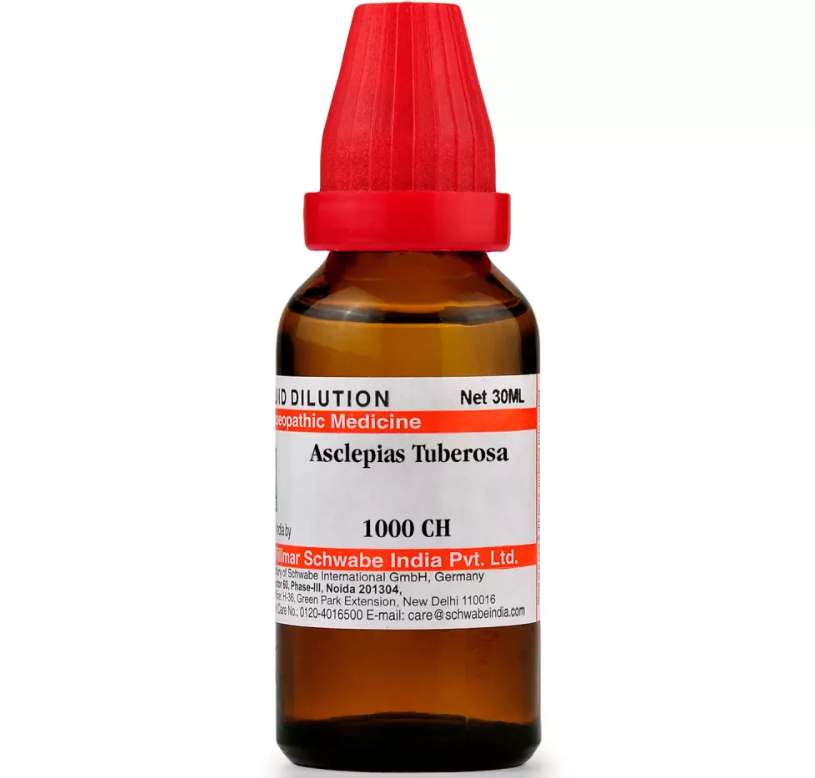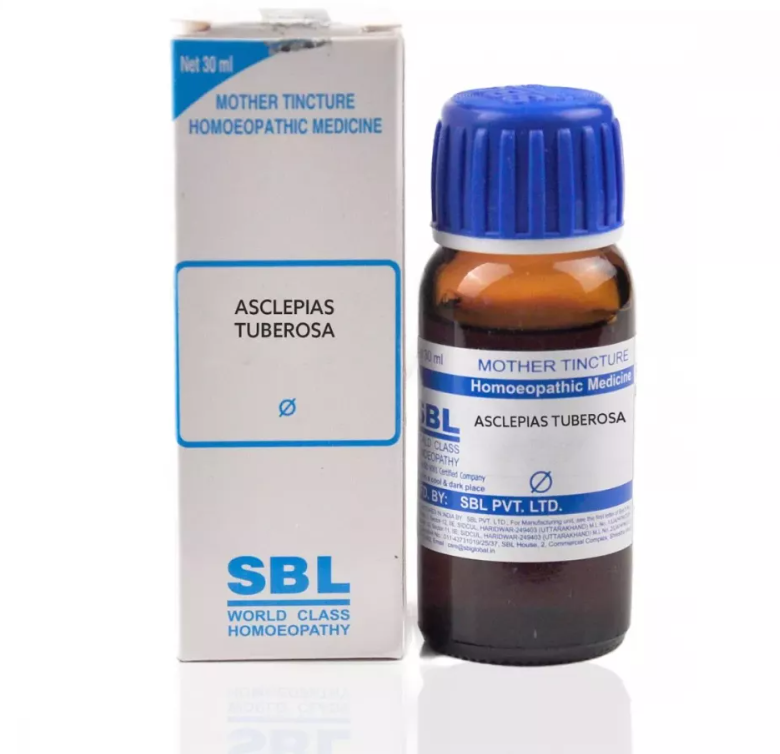ASCLEPIAS TUBEROSA Q, 6C, 12C, 30C, 200C, 1M, 10M USES AND SYMPTOMS
 Ascelpias Tuberosa, also known as Pleurisy-root, exhibits prominent effects on the chest muscles, which have been verified. It addresses conditions such as sick headaches accompanied by flatulence, dyspepsia, bronchitis, and pleurisy. Particularly effective for catarrhal states induced by cold and damp weather. It soothes irritation of the larynx, especially noted in cases of influenza accompanied by pleuritic pain.
Ascelpias Tuberosa, also known as Pleurisy-root, exhibits prominent effects on the chest muscles, which have been verified. It addresses conditions such as sick headaches accompanied by flatulence, dyspepsia, bronchitis, and pleurisy. Particularly effective for catarrhal states induced by cold and damp weather. It soothes irritation of the larynx, especially noted in cases of influenza accompanied by pleuritic pain.
Stomach: Sensation of fullness, pressure, and weight, along with flatulence post meals. Sensitivity to tobacco is observed.
Rectum: Effective in catarrhal dysentery, often accompanied by rheumatic pains throughout the body. Stools emit an odor resembling rotten eggs.
Respiratory: Breathing becomes painful, especially at the base of the left lung. Dry coughing, with a feeling of throat constriction causing pain in the head and abdomen. Chest pain often shoots downward from the left nipple. Acts as a general eliminative remedy, particularly affecting the sweat glands. Bending forward alleviates chest pains. Tenderness is noted in the intercostal spaces near the sternum. Sharp pains may be felt between the shoulders. Catarrh presents with frontal headache and a sticky yellow discharge.
Extremities: Joints affected by rheumatism feel as if adhesions would break upon bending.
Relationship: Comparable to Asclepias incarnata (Swamp milkweed) for chronic gastric catarrh and leucorrhea, and Periploca graeca (one of the Asclepiades) for its cardiac tonic properties, impacting circulation and the respiratory center, particularly accelerating respiration disproportionately to the pulse. It’s related to Bryonia and Dulcamara.
Dosage: Administer as tincture or in first potency.
SYMPTOMS OF ASCLEPIAS TUBEROSA
Acts significantly on chest muscles, verified effect.
Addresses sick headaches with flatulence, dyspepsia, bronchitis, and pleurisy.
Effective for catarrhal states from cold, damp weather.
Soothes laryngeal irritation, especially with influenza and pleuritic pain.
Stomach:
Sensation of fullness, pressure, weight, and post-meal flatulence.
Sensitivity to tobacco noted.
Rectum:
Effective for catarrhal dysentery, with accompanying rheumatic pains.
Stools emit rotten egg-like odor.
Respiratory:
Painful respiration, particularly at left lung base.
Dry cough, throat constriction causing head and abdominal pain.
Chest pain shoots from left nipple downward.
Acts as a general eliminative remedy, especially for sweat glands.
Chest pains relieved by bending forward, tender intercostal spaces near sternum.
Sharp pains between shoulders, catarrh with frontal headache and sticky yellow discharge.
Extremities:
Joints affected by rheumatism feel as if adhesions would break upon bending.
Relationship:
Comparable to Asclepias incarnata for gastric catarrh and Periploca graeca for cardiac tonic effects, also related to Bryonia and Dulcamara.
Dosage:
Administer as tincture or in first potency.
selection of the potency
Individualization:
- Homeopathy is based on the principle of treating the individual, not just the disease. The unique symptoms and characteristics of the person are crucial in determining the most suitable potency.
Intensity of Symptoms:
- The intensity of the symptoms guides the choice of potency. If the symptoms are intense and acute, a lower potency (e.g., 6C, 30C) might be considered. For chronic conditions with less intensity, higher potencies (e.g., 200C, 1M) may be appropriate.
Sensitivity of the Patient:
- Some individuals are more sensitive to homeopathic remedies, while others may require higher potencies. The practitioner considers the patient’s sensitivity when selecting the potency.
Acute vs. Chronic Conditions:
- Lower potencies are often used for acute conditions, while higher potencies may be considered for chronic or long-standing issues.
Previous Response to Potencies:
- The patient’s response to previous homeopathic treatments helps guide the choice of potency. If a particular potency has been effective in the past, it may be repeated or adjusted as needed.
Vital Force and Susceptibility:
- Homeopathy views illness as a disturbance in the vital force. The practitioner assesses the patient’s overall vitality and susceptibility to determine the appropriate potency.
Aggravation or Amelioration:
- The direction of the symptom response (aggravation or amelioration) after taking a remedy can influence the choice of potency.
Miasmatic Considerations:
- In classical homeopathy, the concept of miasms (inherited disease tendencies) is considered. The practitioner take this into account when selecting the potency.
Practitioner Experience:
- The experience and preference of the homeopathic practitioner play a role. Some practitioners may have success with certain potencies based on their clinical experience.
SAFETY INFORMATION
- Do not exceed the recommended dose by physician
- Keep out of the reach of children
- Store in a cool dry place away from direct sunlight
- Maintain half an hour gap between food/drink/any other medicines and homoeopathic medicine
- Avoid any strong smell in the mouth while taking medicine e.g. camphor, garlic, onion, coffee, hing
Medicine images use for reference only selection of homeopathic medicine depends on the individual’s specific symptoms and overall constitution. Moreover, homeopathy is a holistic system of medicine that treats the individual as a whole. In addition to addressing the physical symptoms, it takes into account the emotional and mental state of the person. Consequently, it’s crucial to consult with a qualified homeopathic practitioner for personalized treatment.
The information provided on this website is intended solely for educational purposes. Always seek the advice of your physician or other qualified health provider.
